Autonomous right-screw rotation of growth cone filopodia drives neurite turning
- PMID: 20123994
- PMCID: PMC2819689
- DOI: 10.1083/jcb.200906043
Autonomous right-screw rotation of growth cone filopodia drives neurite turning
Abstract
The direction of neurite elongation is controlled by various environmental cues. However, it has been reported that even in the absence of any extrinsic directional signals, neurites turn clockwise on two-dimensional substrates. In this study, we have discovered autonomous rotational motility of the growth cone, which provides a cellular basis for inherent neurite turning. We have developed a technique for monitoring three-dimensional motility of growth cone filopodia and demonstrate that an individual filopodium rotates on its own longitudinal axis in the right-screw direction from the viewpoint of the growth cone body. We also show that the filopodial rotation involves myosins Va and Vb and may be driven by their spiral interactions with filamentous actin. Furthermore, we provide evidence that the unidirectional rotation of filopodia causes deflected neurite elongation, most likely via asymmetric positioning of the filopodia onto the substrate. Although the growth cone itself has been regarded as functionally symmetric, our study reveals the asymmetric nature of growth cone motility.
Figures

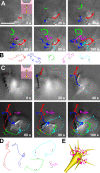
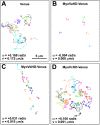
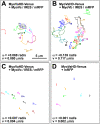

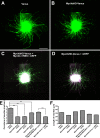

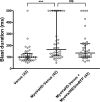
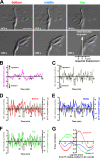
Similar articles
-
Myosin IIB is required for growth cone motility.J Neurosci. 2001 Aug 15;21(16):6159-69. doi: 10.1523/JNEUROSCI.21-16-06159.2001. J Neurosci. 2001. PMID: 11487639 Free PMC article.
-
Filopodial calcium transients promote substrate-dependent growth cone turning.Science. 2001 Mar 9;291(5510):1983-7. doi: 10.1126/science.1056490. Science. 2001. PMID: 11239161
-
Human myosin VIIa is a very slow processive motor protein on various cellular actin structures.J Biol Chem. 2017 Jun 30;292(26):10950-10960. doi: 10.1074/jbc.M116.765966. Epub 2017 May 15. J Biol Chem. 2017. PMID: 28507101 Free PMC article.
-
Regulating filopodial dynamics through actin-depolymerizing factor/cofilin.Anat Sci Int. 2004 Dec;79(4):173-83. doi: 10.1111/j.1447-073x.2004.00087.x. Anat Sci Int. 2004. PMID: 15633455 Review.
-
The clutch hypothesis revisited: ascribing the roles of actin-associated proteins in filopodial protrusion in the nerve growth cone.J Neurobiol. 2000 Aug;44(2):114-25. doi: 10.1002/1097-4695(200008)44:2<114::aid-neu3>3.0.co;2-8. J Neurobiol. 2000. PMID: 10934316 Review.
Cited by
-
Neurally Derived Tissues in Xenopus laevis Embryos Exhibit a Consistent Bioelectrical Left-Right Asymmetry.Stem Cells Int. 2012;2012:353491. doi: 10.1155/2012/353491. Epub 2012 Dec 30. Stem Cells Int. 2012. PMID: 23346115 Free PMC article.
-
Cellular chirality arising from the self-organization of the actin cytoskeleton.Nat Cell Biol. 2015 Apr;17(4):445-57. doi: 10.1038/ncb3137. Epub 2015 Mar 23. Nat Cell Biol. 2015. PMID: 25799062
-
Role of extrinsic mechanical force in the development of the RA-I tactile mechanoreceptor.Sci Rep. 2018 Jul 23;8(1):11085. doi: 10.1038/s41598-018-29390-x. Sci Rep. 2018. PMID: 30038295 Free PMC article.
-
Dynamic buckling of actin within filopodia.Commun Integr Biol. 2015 Apr 29;8(2):e1022010. doi: 10.1080/19420889.2015.1022010. eCollection 2015 Mar-Apr. Commun Integr Biol. 2015. PMID: 26479403 Free PMC article.
-
An unexpected turn for filopodia.Biophys J. 2023 Sep 19;122(18):3549-3550. doi: 10.1016/j.bpj.2023.05.030. Epub 2023 Jun 1. Biophys J. 2023. PMID: 37311456 Free PMC article. No abstract available.
References
Publication types
MeSH terms
Substances
LinkOut - more resources
Full Text Sources

